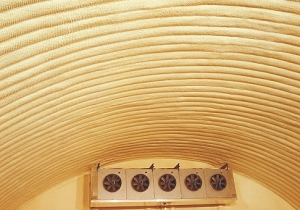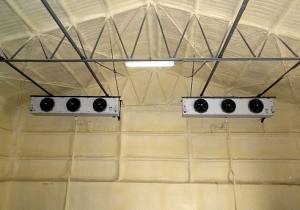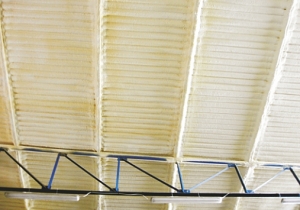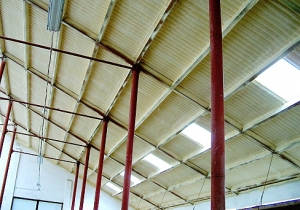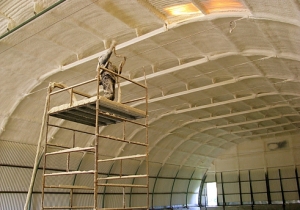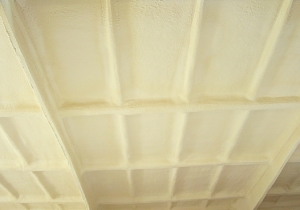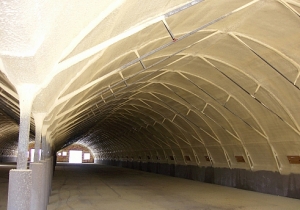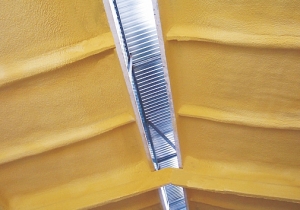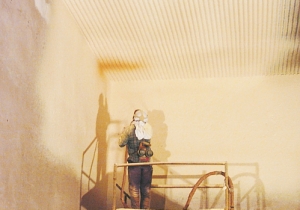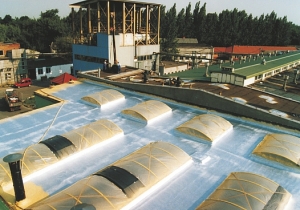Thermal insulation
The main advantages of this method, include:
- high application capacity of coats
- low time demand of involved activities, favourable pricing
LIVESTOCK BUILDINGS, STORAGE HALLS AND CHAMBERS
The coat, which is applied in multiple layers, constitutes an optimal, seamless thermal insulation layer. The ability to apply it onto pre-insulated surfaces eliminates the need to install closed-pore insulations and eliminates thermal bridges. It can be readily used for overhauls of existing objects as well as in newly-built ones.
Properties of the polyurethane foam include:
- very low thermal conductivity (0,025W/m2)
- perfect adhesion to most types of bases
- durability and stability over a wide range of temperatures
- ability to cover surfaces with varying textures and shapes, which directly translates to operational properties of resulting coats.
The key advantages of these coats include:
- uniform and seamless surface,
- no need to utilize additional fixing elements,
- durability and strength,
- low specific gravity,
- very high tightness (freezing chambers with controlled atmospheres), meets requirements of anti-condensation coats.
Polyurethane foam systems we have been using, have necessary approvals and certificates.
We are members of the Polish Association of PUR and PIR Polyurethane Insulation Manufacturers and Processors (Polski Związek Producentów i Przetwórców Izolacji Poliuretanowych PUR i PIR).
ROOFS
Thick polyurethane foam spraying can be successfully used for application of thermal insulations on roofs and flat roofs, where the layer of the cured foam ensures water tightness at the same time. The process of insulation and sealing occurs concurrently in this case. Insulated roofs must have the minimum slope of 3%, which will allow for free drainage of water from the roof structure. However it shall be noted here, that with appropriate foam spraying one can also reduce all that spots on the roof slope, where due to structural deficiencies water tends to accumulate, affecting roof tightness. The spraying method has been gaining in popularity with repairs of old roofs, in particular on industrial objects, as such roofs can be coated without the need to remove the existing, old coating.
Some of the key advantages of these coats include:
- seamless coat which eliminates thermal bridges,
- very good sealing of complex profiles,
- lightweight properties of the coat, due to the low density of the foam (60-70kg/m3)
- perfect adhesion to the base,
- water vapour permeability,
- high mechanical resistance and insensitivity to atmospheric conditions,
- additional stiffening of structural components.
Sunlight (UV rays) is the factor, which is has the most significant (destructive) impact on the polyurethane foam. Therefore such coats shall be additionally protected with a special protective coat.



